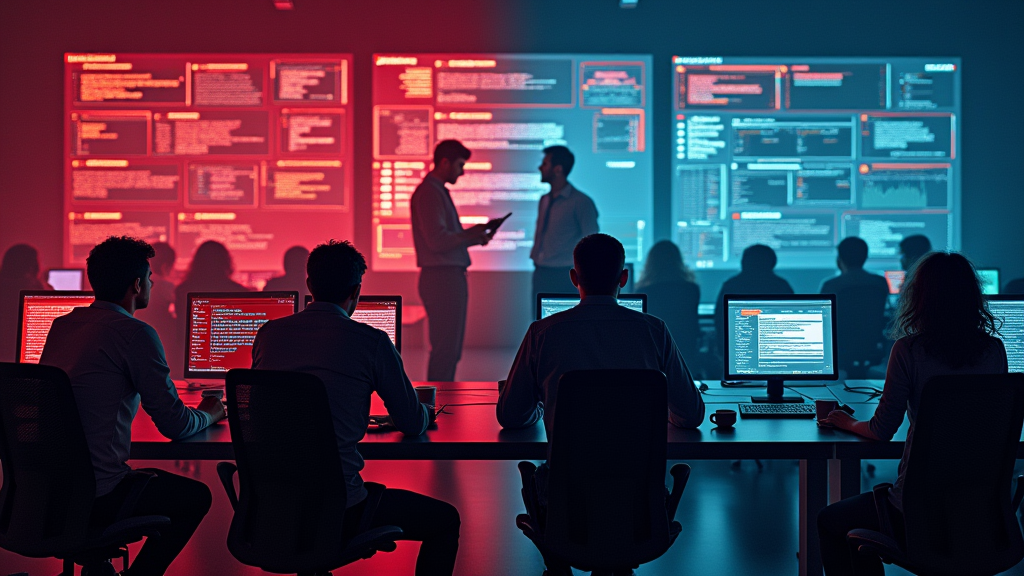Burnout in cybersecurity isn’t just about long hours—it’s about never getting a break. The alerts never stop, the pressure never eases, and there’s always the fear that one missed notification could be the one that actually matters. A massive part of that stress is unnecessary. A recent Gartner Peer Community survey found 62% of IT and security leaders have experienced burnout.
But Resilience isn’t about working harder—it’s about fostering psychological safety, sustainable workflows, and post-traumatic growth in high-stakes environments. When teams have the right support, smarter processes, and a culture that prioritizes well-being, they can handle the pressure without breaking under it.
Real-World Scenario: How a CISO Tackled Quiet Quitting After a Zero-Day Exploit
At 2:37 AM, the alerts wouldn’t stop. A cybersecurity team was in the middle of a zero-day exploit—one of the worst kinds of threats. By morning, they had it under control. The company was fine. The team? Not so much. The burnout had just begun. Senior analysts quit. The rest started checking out—not because they didn’t care, but because they were exhausted. The Chief Information Security Officer (CISO) had two options: keep pushing until more people walked or fix the workload before it got worse.
He chose the second option.

What Worked?
Resilience Sprints – A rotating on-call system to break the cycle of constant stress.
Mental Health Days – Dedicated recovery time after high-stakes incidents.
CyberTherapy Sessions – HR-backed counselling for employees dealing with burnout.
AI-Powered Threat Triage – Automating alert prioritisation to cut down on false alarms.
What Changed?
40% drop in turnover
70% faster response times to security threats
Building Resilience Without Breaking Your Team
Cut Down on Workload Overload
The CISO’s strategy worked, but it wasn’t just about mental health days or therapy sessions—it was about fixing the root cause of burnout. One of the biggest culprits? An unmanageable workload.
The reality is that expecting teams to be available 24/7 doesn’t lead to better results—it leads to exhaustion. Cybersecurity teams, for example, A Dark Reading study found that 56% of large companies handle over 1,000 security alerts daily, with 93% unable to address all alerts within the same day. 83% of security professionals report experiencing alert fatigue. That’s hours wasted on alerts that don’t even matter, keeping them in a constant state of high alert. This is where automation changes the game.
What Leaders Can Do:
✔ Use automation to eliminate distractions and focus on real threats.
✔ Set response expectations so teams don’t have to react to everything at once.
When leaders relieve their teams of unnecessary stress, people not only perform better but also stay longer.

Talk About Stress Before It Becomes Burnout
Fixing the workload issue is a big step, but burnout isn’t just about how much work people do—it’s about how they experience it.
One of the biggest mistakes companies make? Blaming individuals for mistakes instead of improving the system. When teams fear making errors, they go into survival mode—taking fewer risks, avoiding ownership, and, eventually, burning out.
A leading cybersecurity company reduced burnout-related resignations by 15% simply by shifting its approach to mistakes. Instead of asking, “Who is responsible?” leaders started asking, “What can be improved next time?”Structured debriefs allowed employees to talk about what worked, what didn’t, and how to improve—without fear of blame.
This isn’t just about being “nice.” Research from the SANS Institute shows that psychological safety—where employees feel safe to voice concerns—leads to higher engagement, better problem-solving, and lower turnover.
What Leaders Can Do:
✔ Focus on improvement, not blame.
✔ Hold regular debriefs so teams can talk openly about challenges and improvements.
When people feel safe to speak up, they don’t just work harder—they work smarter.

Making Hybrid Work Manageable
Even with workload management and strong team culture, burnout can creep in if employees feel “always on.”
Hybrid work is excellent for flexibility but comes with a significant risk—workload creep. When teams don’t have clear expectations, employees often feel pressure to be constantly available, leading to stress and disengagement.
After introducing structured hybrid work policies, a security firm saw a 50% decrease in burnout complaints and a 20% improvement in response times. The key? Defining clear collaboration hours so employees knew exactly when they were expected to be online and using asynchronous tools to cut down on unnecessary meetings.
What Leaders Can Do:
✔ Define collaboration hours to prevent unrealistic availability expectations.
✔ Use async tools like Slack or Notion to reduce meeting overload.
When teams have clear policies and the right tools, they can work efficiently without burning out.

Leadership Actions That Make a Difference
Let’s go back to that 2:37 AM crisis.
That security breach wasn’t just a test of technical defences but a test of leadership. Some firms lose their best people after high-pressure incidents, while others keep them engaged. The difference? Innovative leaders take action before burnout takes over.
- Support Mental Health – When teams are pushed to their limits, stress builds up fast. Offering stipends for therapy apps, quiet work retreats, or noise-cancelling headphones can make a real difference. A well-rested team doesn’t just work harder—they make better decisions under pressure.
- Improve Crisis Readiness – High-pressure incidents aren’t just about technical failures; they expose weaknesses in communication, decision-making, and team resilience. Running stress-test drills lets leaders see how their team handles chaos so they’re not caught off guard when the next crisis hits.
- Monitor Burnout Risks – Tough moments don’t just pass; they leave an impact. If exhaustion starts creeping in, productivity and morale take a hit. Tools like Culture Amp or Peakon help track engagement so leaders can step in before burnout leads to people walking away.

leadership isn’t just about handling things at the moment—it’s about making sure your team can bounce back, adjust, and stay motivated even after the chaos is over.
Frequently Asked Questions:
1. How can leaders prevent burnout in high-pressure industries?
Burnout prevention starts with precise workload management, mental health days, and automation to handle repetitive tasks. Leaders should encourage open conversations about stress and set realistic expectations.
2. What is psychological safety, and why does it matter?
Psychological safety means employees can speak up without fear of criticism. When people feel heard, they’re more engaged and less likely to quit.
3. How can hybrid work be structured to reduce stress?
A structured hybrid work model should define core collaboration hours, reduce unnecessary meetings, and rely on async communication tools to prevent burnout.
4. What are resilience stipends?
Resilience stipends are allowances for employees to spend on self-care, whether that’s therapy apps, wellness programs, or noise-cancelling headphones.
5. How does AI-driven automation help cybersecurity teams?
AI-powered tools filter out false alarms, allowing teams to focus on real security risks and reducing unnecessary stress.
6. Why do mental health days matter?
Mental health days give employees time to recover after high-stress periods. Without breaks, stress builds up, leading to lower productivity and higher turnover.
7. How can managers recognise burnout early?
Burnout signs include withdrawal from team discussions, increased absenteeism, and declining motivation. Tracking engagement through surveys and one-on-one check-ins helps spot issues before they escalate.
8. What causes workload creep in hybrid teams?
Workload creep happens when small extra tasks pile up, leading to burnout. Setting clear priorities and limits helps keep it under control.
9. What are resilience sprints?
Resilience sprints rotate high-pressure responsibilities among team members, keeping workloads balanced and reducing stress.
10. How can companies measure if their burnout prevention efforts are working?
Companies can track burnout risk by monitoring engagement surveys, turnover rates, and crisis response time.
Final Thoughts
A great workplace isn’t about pushing people to their limits—it’s about knowing when to push and when to step back.
People don’t do their best work when they’re running on empty. Build in time to recharge, and they won’t just stick around—they’ll bring their best every day.
What’s the smartest resilience move you’ve seen? Drop it in the comments or tag a leader who is doing it right.
Disclaimer: The views and opinions expressed in this blog are of my own. They are an articulation of my knowledge, experience and research on the topic. The facts and opinions expressed here do not reflect the views of my current or previous employers.

